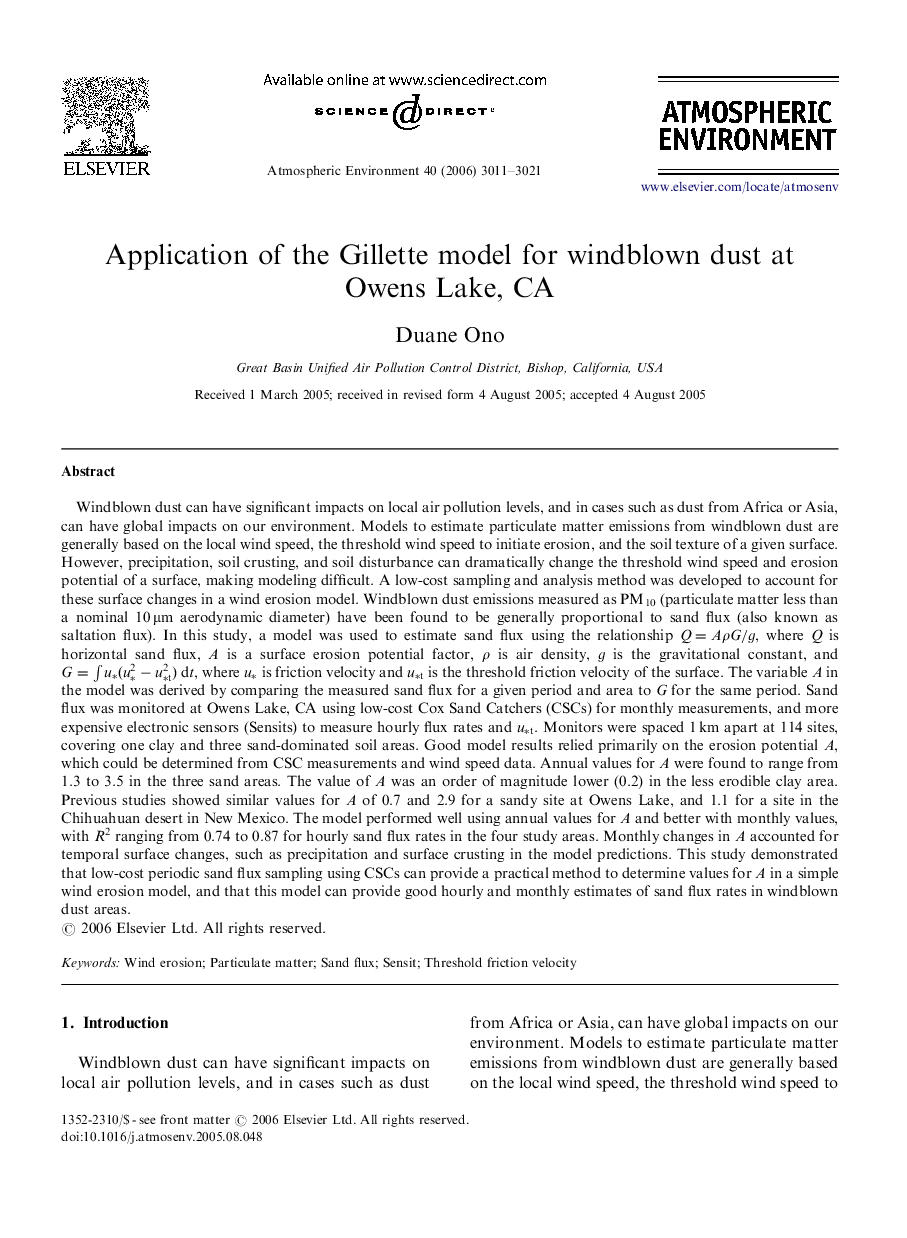| کد مقاله | کد نشریه | سال انتشار | مقاله انگلیسی | نسخه تمام متن |
|---|---|---|---|---|
| 4444728 | 1311253 | 2006 | 11 صفحه PDF | دانلود رایگان |

Windblown dust can have significant impacts on local air pollution levels, and in cases such as dust from Africa or Asia, can have global impacts on our environment. Models to estimate particulate matter emissions from windblown dust are generally based on the local wind speed, the threshold wind speed to initiate erosion, and the soil texture of a given surface. However, precipitation, soil crusting, and soil disturbance can dramatically change the threshold wind speed and erosion potential of a surface, making modeling difficult. A low-cost sampling and analysis method was developed to account for these surface changes in a wind erosion model. Windblown dust emissions measured as PM10 (particulate matter less than a nominal 10 μm aerodynamic diameter) have been found to be generally proportional to sand flux (also known as saltation flux). In this study, a model was used to estimate sand flux using the relationship Q=AρG/g, where Q is horizontal sand flux, A is a surface erosion potential factor, ρρ is air density, g is the gravitational constant, and G=∫u*(u*2-u*t2)dt, where u*u* is friction velocity and u*tu*t is the threshold friction velocity of the surface. The variable A in the model was derived by comparing the measured sand flux for a given period and area to G for the same period. Sand flux was monitored at Owens Lake, CA using low-cost Cox Sand Catchers (CSCs) for monthly measurements, and more expensive electronic sensors (Sensits) to measure hourly flux rates and u*tu*t. Monitors were spaced 1 km apart at 114 sites, covering one clay and three sand-dominated soil areas. Good model results relied primarily on the erosion potential A, which could be determined from CSC measurements and wind speed data. Annual values for A were found to range from 1.3 to 3.5 in the three sand areas. The value of A was an order of magnitude lower (0.2) in the less erodible clay area. Previous studies showed similar values for A of 0.7 and 2.9 for a sandy site at Owens Lake, and 1.1 for a site in the Chihuahuan desert in New Mexico. The model performed well using annual values for A and better with monthly values, with R2R2 ranging from 0.74 to 0.87 for hourly sand flux rates in the four study areas. Monthly changes in A accounted for temporal surface changes, such as precipitation and surface crusting in the model predictions. This study demonstrated that low-cost periodic sand flux sampling using CSCs can provide a practical method to determine values for A in a simple wind erosion model, and that this model can provide good hourly and monthly estimates of sand flux rates in windblown dust areas.
Journal: Atmospheric Environment - Volume 40, Issue 17, June 2006, Pages 3011–3021